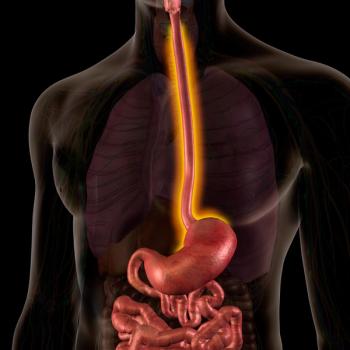
Technosphere insulin: An inhaled mealtime insulin for the treatment of type 1 and type 2 diabetes mellitus
Technosphere insulin is an inhaled form of regular human insulin with a rapid onset of action (~15 min) that is being considered for approval for the treatment of type 1 and type 2 diabetes mellitus. Technosphere insulin has shown efficacy in decreasing the level of glycosylated hemoglobin in a dose-dependent manner.
Key Points
Abstract
Technosphere insulin is an inhaled form of regular human insulin with a rapid onset of action (~15 min) that is being considered for approval for the treatment of type 1 and type 2 diabetes mellitus. Technosphere insulin has shown efficacy in decreasing the level of glycosylated hemoglobin (A1c) in a dose-dependent manner. A clinical trial in type 2 diabetes found that mealtime Technosphere insulin plus bedtime insulin glargine was noninferior to twice daily biaspart insulin in reducing A1c from baseline. Technosphere insulin may lead to an increased frequency of cough upon administration, but this effect appears to subside after 6 weeks. Current data show that Technosphere insulin has no impact on pulmonary function (measured by forced vital capacity and forced expiratory volume), but long-term studies are needed. (Formulary. 2011; 46:14–17.)
Type 2 diabetes mellitus (T2DM) is a complex medical illness that may lead to long-term complications, such as renal, ocular, nerve, and cardiovascular disease.1 Hyperglycemia is often treated with oral antidiabetic medications (OADs), targeting reductions in levels of glycosylated hemoglobin (A1c). In a consensus statement issued by the American Diabetes Association and the European Association of the Study of Diabetes, treatment recommendations for T2DM include initial treatment with metformin.2 Most patients with T2DM may not be able to reach glycemic targets with metformin alone; in those cases, the recommended add-on therapies are either a sulfonylurea or insulin.2 Although insulin is effective in achieving glycemic control, many patients and providers are reluctant to initiate insulin treatment.3 This reluctance stems from a lower likelihood of adherence to medication if it needs to be injected, owing to the belief that injecting insulin is a painful and complicated process.4,5
CHEMISTRY AND PHARMACOLOGY
Technosphere is a drug delivery system created by microparticles called fumaryl diketopeperazine (FDKP), which form microspheres small enough for inhalation (2-3 μm).8 Regular human insulin is incorporated into the microspheres, which are then lyophilized into a dry powder for inhalation.8
PHARMACOKINETICS
Upon inhalation of Technosphere insulin, the lung pH causes dissolution of the microspheres, releasing insulin for lung absorption.8 Technosphere insulin provides maximal blood concentration in a dose-dependent manner 12 to 17 minutes after inhalation, and a relative bioavailability of 21% to 25% compared to subcutaneous regular human insulin.9 The half-life of inhaled Technosphere insulin is approximately 45 minutes (4 hours less than subcutaneous regular human insulin).9
CLINICAL TRIALS
A phase 2b, randomized, double-blind, placebo-controlled, parallel-group trial evaluated the dose response of fixed doses of Technosphere insulin compared to Technosphere placebo powder in adult patients with T2DM (n=227) who were inadequately controlled with their current medications (either OADs or insulin).11 Patients discontinued all previous therapy and initiated insulin glargine titrated to fasting blood glucose levels <160 mg/dL. Patients were randomly assigned to receive Technosphere insulin at 4 different doses (14, 28, 42, and 56 U) or Technosphere placebo powder to be inhaled at mealtimes. After 11 weeks of treatment, patients treated with Technosphere insulin experienced statistically significant reductions in A1c from baseline (P≤.05 for all doses) in a dose-dependent manner, whereas no change from baseline was observed in patients treated with Technosphere placebo powder (P=.098).
A phase 3, randomized, open-label, parallel-group trial evaluated the efficacy and safety of Technosphere insulin in adult patients with T2DM (n=677 randomized) with poor glycemic control despite baseline insulin therapy, with or without OADs.12 Patients were randomly assigned to receive prandial Technosphere inhaled insulin plus bedtime subcutaneous insulin glargine, or twice-daily subcutaneous premixed biaspart insulin titrated by the investigator to glycemic targets. Patients were allowed to continue OADs; the rate of OAD use was similar between the groups. The primary end point was the change in A1c from baseline to week 52. In an analysis of the 448 per-protocol patients in a noninferiority comparison with a margin of 0.4%, Technosphere insulin plus glargine was noninferior to biaspart insulin in A1c reductions from baseline (difference between groups 0.07%; 95% CI, -0.13% to 0.27%). The proportion of patients achieving A1c ≤7% was also similar between the 2 groups (P=.2793).
ADVERSE EVENTS
In a 12-week study in insulin-naïve patients with T2DM, there was no significant difference between Technosphere insulin and Technosphere placebo powder in the overall incidence of hypoglycemia (P=.32).10 When comparing a range of fixed doses of Technosphere insulin to Technosphere placebo powder, there was no significant difference in the number of patients reporting hypoglycemia over 11 weeks; and no cases of serious hypoglycemia were reported.11
In a 52-week study, patients taking Technosphere insulin plus insulin glargine (n=323) experienced less events of both mild-to-moderate (P<.0001) and severe (P=.0066) hypoglycemia than patients taking biaspart insulin (n=331).12
In insulin-naïve patients with T2DM, no increases in weight were seen after 12 weeks of Technosphere insulin added to OADs, and there was no significant difference with Technosphere placebo powder (P=.07).10 No significant changes in body weight occurred over 11 weeks of treatment with fixed doses of Technosphere insulin compared to Technosphere placebo powder.11 Patients treated with Technosphere insulin plus insulin glargine (n=323) experienced significantly less weight gain than patients treated with biaspart insulin (n=331) over 52 weeks (0.9 kg vs 2.5 kg, P=.0002).12
The rate of coughing episodes was similar between Technosphere insulin and Technosphere placebo powder over 12 weeks, with most episodes reported within 10 minutes of administration.10 Over 11 weeks of therapy, there was no difference in the rate of cough between patients taking a range of fixed doses of Technosphere insulin and taking Technosphere placebo powder.11 In a 52-week study, more patients treated with Technosphere insulin plus insulin glargine reported cough than patients treated with biaspart insulin, but most episodes were within the first week of treatment and the rate of episodes declined by week 6 of therapy.12
No changes in pulmonary function, as measured by forced expiratory volume and forced expiratory flow in 1 second, were observed in a 12-week study of Technosphere insulin compared to Technosphere placebo powder.10 Pulmonary function was unchanged with 11 weeks of therapy with a range of fixed doses of Technosphere insulin.11 Pulmonary function after 52 weeks was not significantly different between Technosphere insulin plus insulin glargine and biaspart insulin.12
DRUG INTERACTIONS
Drug interactions with Technosphere insulin would be expected to be similar to subcutaneous insulin. There may be an increased risk for hypoglycemia when used concurrently with OADs.
DOSING AND ADMINISTRATION
Technosphere insulin inhalation powder is available in pre-metered singleuse cartridges for use with a specially designed inhaler.8 The cartridges are inserted into the breath-powered inhaler, and patients take a deep inhalation by mouth to administer the product 1 minute before the first bite of a meal.8 As with other insulin products, the dose is patient-specific and titrated to blood glucose levels. Based on the cartridges used in the latest phase 3 trial published, Technosphere insulin will most likely be offered in 15-U and 30-U pre-metered cartridges, where 15 U of Technosphere insulin is approximately equal to 3.8 U of subcutaneous rapid-acting insulin analogue.12 There are currently no recommendations regarding dosage adjustments in smokers or those with respiratory problems.
FORMULARY CONSIDERATIONS
Technosphere insulin is a new form of inhaled human insulin pending FDA approval for the treatment of type 1 diabetes mellitus and T2DM. Most of the published evidence regarding Technosphere insulin's efficacy has been in patients with T2DM. In a phase 3 randomized controlled trial, a regimen of mealtime Technosphere insulin plus insulin glargine was found to be noninferior to a regimen of twice-daily biaspart insulin.12
Patients generally tolerated Technosphere insulin well, with an increase in the frequency of cough being most commonly reported. Rates of hypoglycemia and weight gain were similar to other insulin regimens, and there was no decline in pulmonary function over 1 year of use. The previously marketed inhaled insulin, Exubera, mentioned a potential link to lung cancer in its product labeling, even though causation has not been established. Longer durations of observation with Technosphere insulin are required to detect potential additional harms, such as lung cancer.
Inhaled insulin may be an attractive alternative to subcutaneous insulin, but the role of Technosphere insulin is uncertain at this time. The failed adoption of Exubera may lead clinicians to question the acceptance of Technosphere insulin. However, the Exubera inhaler was bulky and difficult to use, whereas the Technosphere inhaler is more compact and may be easier for patients to use. Inhaled insulin absorption in patients with chronic pulmonary problems may also be a concern, but evidence is limited at this time.
Although not yet FDA approved, Technosphere insulin may be more costly than subcutaneous forms of insulin. However, the option of a noninjectable form of insulin may be appealing to patients who would be otherwise hesitant to initiate insulin.
Dr Phung is assistant professor of pharmacy practice, Western University of Health Sciences, College of Pharmacy, Pomona, Calif.
Disclosure Information: The author reports no financial disclosures as related to products discussed in this article.
In each issue, the "Focus on" feature reviews a newly approved or investigational drug of interest to pharmacy and therapeutics committee members. The column is coordinated by Robert A. Quercia, MS, RPh, medical editor, Department of Pharmacy Services, University of Connecticut/Hartford Hospital, Evidence-based Practice Center, Hartford, Conn., and adjunct associate professor, University of Connecticut School of Pharmacy, Storrs, Conn; and by Craig I. Coleman, PharmD, associate professor of pharmacy practice, University of Connecticut School of Pharmacy, and director, Pharmacoeconomics and Outcomes Studies Group, Hartford Hospital.
EDITORS' NOTE: The clinical information provided in "Focus on" articles is as current as possible. Due to regularly emerging data on developmental or newly approved drug therapies, articles include information published or presented and available to the author up until the time of the manuscript submission.
REFERENCES
1. Standards of medical care in diabetes-2010. Diabetes Care. Jan 2010;33(suppl 1):S11–S61.
2. Nathan DM, Buse JB, Davidson MB, et al. Medical management of hyperglycemia in type 2 diabetes: a consensus algorithm for the initiation and adjustment of therapy: a consensus statement of the American Diabetes Association and the European Association for the Study of Diabetes. Diabetes Care.2009;32:193–203.
3. Peyrot M, Rubin RR, Lauritzen T, et al. Resistance to insulin therapy among patients and providers: results of the cross-national Diabetes Attitudes, Wishes, and Needs (DAWN) study. Diabetes Care. 2005;28:2673–2679.
4. Davidson MB, Mehta AE, Siraj ES. Inhaled human insulin: an inspiration for patients with diabetes mellitus? Cleve Clin J Med. 2006;73:569–578.
5. de Galan BE, Simsek S, Tack CJ, Heine RJ. Efficacy and safety of inhaled insulin in the treatment of diabetes mellitus. Neth J Med. 2006;64:319–325.
6. Freemantle N, Blonde L, Duhot D, et al. Availability of inhaled insulin promotes greater perceived acceptance of insulin therapy in patients with type 2 diabetes. Diabetes Care. 2005;28:427–428.
7. Pfizer, Inc. Exubera (inhaled human insulin) package insert. New York, NY; 2006.
8. Richardson PC, Boss AH. Technosphere insulin technology. Diabetes Technol Ther. Jun 2007;9(suppl 1):S65–S72.
9. Rave K, Potocka E, Boss AH, Marino M, Costello D, Chen R. Pharmacokinetics and linear exposure of AFRESA compared with the subcutaneous injection of regular human insulin. Diabetes Obes Metab. 2009;11:715–720.
10. Rosenstock J, Bergenstal R, Defronzo RA, et al. Efficacy and safety of Technosphere inhaled insulin compared with Technosphere powder placebo in insulin-naive type 2 diabetes suboptimally controlled with oral agents. Diabetes Care. 2008;31:2177–2182.
11. Tack CJ, Christov V, de Galan BE, et al. Randomized forced titration to different doses of technosphere insulin demonstrates reduction in postprandial glucose excursions and hemoglobin A1c in patients with type 2 diabetes. J Diabetes Sci Technol. 2008;2:47–57.
12. Rosenstock J, Lorber DL, Gnudi L, et al. Prandial inhaled insulin plus basal insulin glargine versus twice daily biaspart insulin for type 2 diabetes: a multicentre randomised trial. Lancet. 2010;375:2244–2253.
Newsletter
Get the latest industry news, event updates, and more from Managed healthcare Executive.
















































